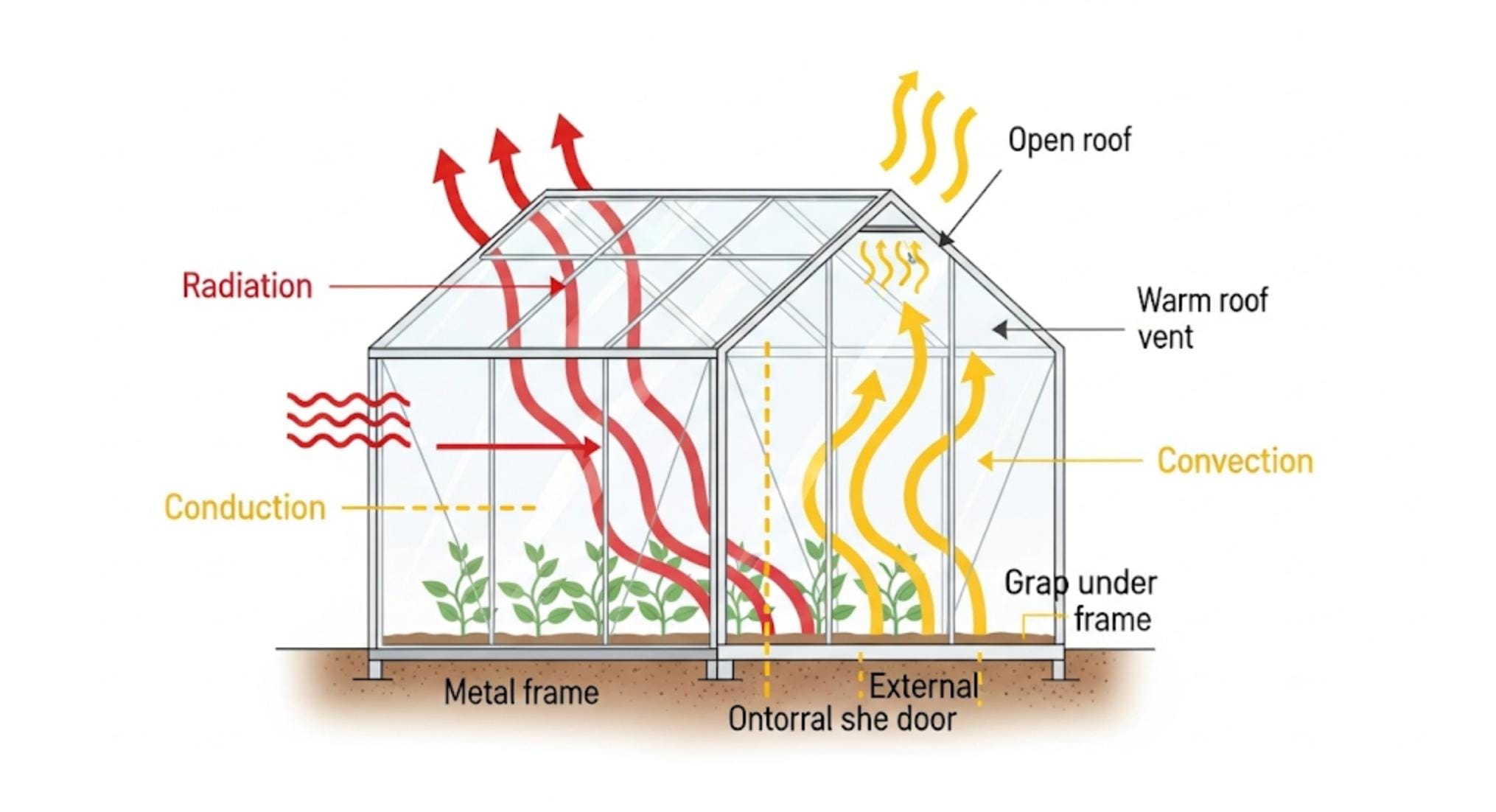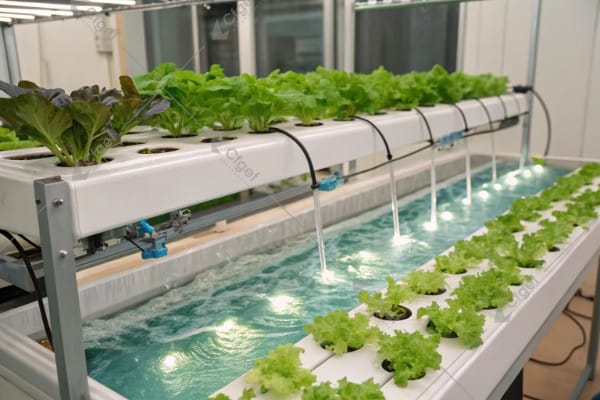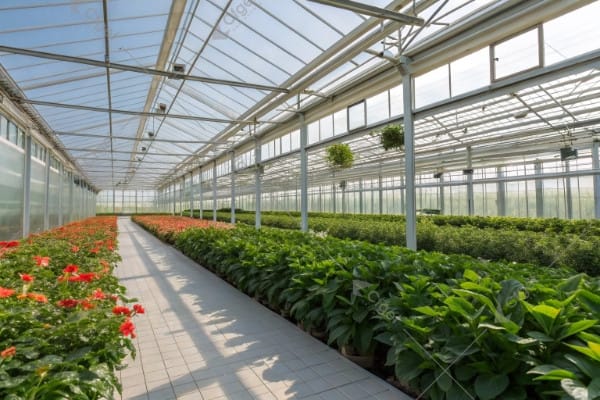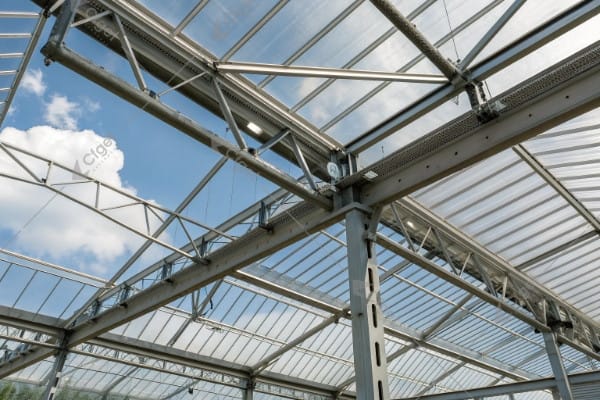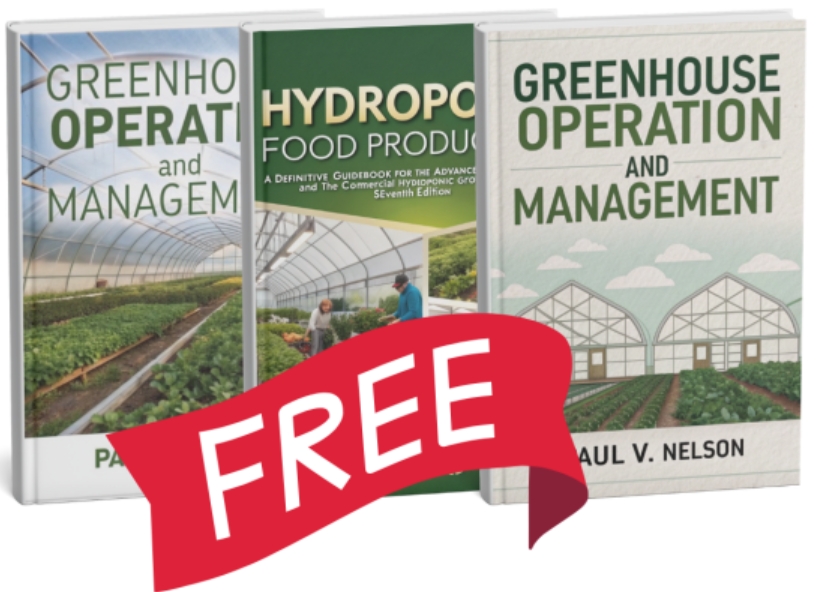Choosing the wrong greenhouse manufacturer can cost you thousands in failed crops, repairs, and lost revenue. I’ve seen many first-time strawberry growers make this costly mistake by focusing solely on initial price rather than long-term value and specific strawberry requirements.
The ideal strawberry greenhouse manufacturer should offer specialized designs for strawberry cultivation, have proven experience with similar projects, provide appropriate climate control for lower temperature requirements, support both land and cultivation trough systems, and offer flexible glazing options with poly film solutions being most cost-effective for commercial operations.
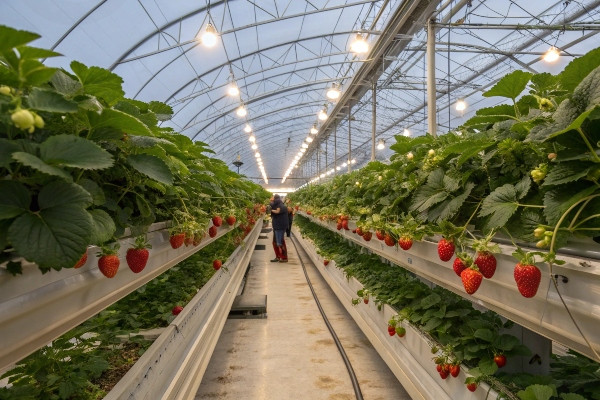
When I started at CFGET nearly three decades ago, one of my first clients was a strawberry farmer who had purchased a standard greenhouse from a manufacturer specializing in ornamental plants. The structure wasn’t designed for the unique needs of strawberries – poor ventilation caused fungal issues, inadequate support systems couldn’t handle the cultivation troughs, and the temperature management was completely wrong for berry production. Within a year, he had to replace nearly everything except the basic frame. That experience taught me how critical matching the right manufacturer to your specific crop is, especially for strawberries which have particular needs that differ from many other greenhouse crops.
Don’t Miss:——Exploring Greenhouse Types: Finding the Perfect Structure for Your Needs
You might like:——Mastering Strawberry Greenhouse Cultivation: Best Practices for Optimal Growth?
Key Factors to Consider When Buying a Commercial Strawberry Greenhouse?
Many new growers rush into greenhouse purchases without understanding the unique requirements of strawberry cultivation, leading to structures that fight against their production goals rather than supporting them. I’ve consulted with farms where this mismatch decreased yields by 40%.
Commercial strawberry greenhouses require specific design features including proper height (3-4m at gutter), enhanced ventilation systems (vents comprising 25-30% of roof area), temperature control for cooler growing conditions (15-26°C optimal), support systems for cultivation troughs or beds, and strong but cost-effective structures that accommodate the 80% preference for poly film coverings.
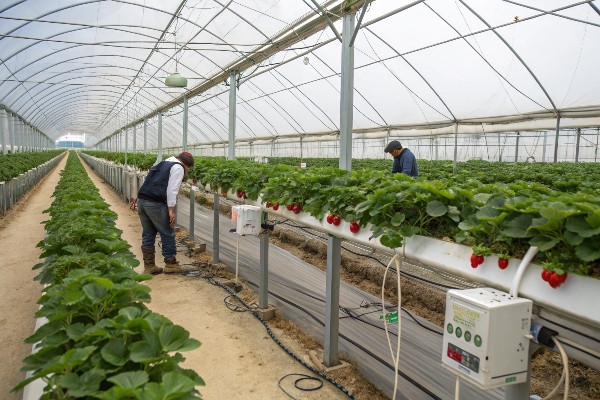
I remember visiting a large-scale strawberry operation in Thailand where the owner had invested heavily in a high-tech vegetable greenhouse without adapting it for berries. The heating system was overbuilt, the structure was unnecessarily tall, and the cost was nearly double what was needed. Meanwhile, essential features like proper ventilation for strawberry-specific disease prevention were lacking. This grower spent two difficult seasons struggling before finally retrofitting the entire system at significant expense.
Structural Requirements Specific to Strawberry Production
Strawberry cultivation presents unique structural challenges that differ from other greenhouse crops. Through my experience developing systems across different climates, I’ve identified these critical design elements that your manufacturer should understand and address:
Height and Space Configuration
Unlike tomatoes or cucumbers, strawberries don’t require extreme heights. The optimal strawberry greenhouse provides:
| Feature | Recommended Specification | Reasoning |
|---|---|---|
| Gutter Height | 3.0-4.0 meters | Allows adequate air circulation while avoiding excessive volume |
| Span Width | 8-9.6 meters | Optimizes growing area while maintaining structural integrity |
| Bay Length | 4-5 meters | Provides flexibility for trough or bed arrangements |
| Post Spacing | 4 meters standard | Balances cost with support requirements |
During a project in Malaysia, we reduced the original greenhouse height specification by 1.5 meters from what the client initially requested (based on tomato greenhouse designs). This adjustment decreased construction costs by approximately 15% while improving climate control efficiency – a perfect example of how strawberry-specific design saves money and improves performance.
Climate Control Systems Calibrated for Strawberries
Strawberries thrive in cooler temperatures than many greenhouse crops, with optimal growing conditions between 15-26°C (59-79°F). Your greenhouse manufacturer should understand this difference and design accordingly:
- Ventilation systems sized for effective cooling rather than heat retention
- Potential need for cooling systems in warmer regions
- Less intensive heating requirements than tomato or pepper houses
- Humidity management to prevent botrytis (gray mold) while maintaining 65-75% relative humidity
I worked with a European client who was planning to install the same heating capacity as his tomato operation into his new strawberry greenhouse. By helping him understand the different temperature requirements, we were able to reduce his heating system capacity by nearly 30%, saving substantial equipment and operating costs while still maintaining perfect growing conditions.
Support Systems for Growing Methods
Your manufacturer should offer appropriate support systems based on your preferred growing method:
- Ground cultivation: Proper pathways, bed delineation, and irrigation layout
- Raised trough systems: Strong, durable supports that accommodate the weight of growing media, plants, and water
- Vertical or tiered systems: Specialized structural reinforcement and light penetration considerations
When visiting a project in Central Asia, I noticed the grower was struggling with a generic trough support system that was sagging under the weight of the growing media. We redesigned the supports with properly engineered load distribution, which not only solved the structural issues but also improved drainage and reduced disease pressure in the crop.
At CFGET, we’ve developed strawberry-specific greenhouse designs that account for all these factors, creating structures that serve the unique needs of berry production rather than forcing growers to adapt to generic greenhouse designs. This specialization typically results in 15-20% better yields and significantly reduced operating costs over the greenhouse’s lifetime.
What Questions Should You Ask a Greenhouse Supplier Before Purchasing?
Asking the wrong questions – or failing to ask any at all – leads to expensive disappointments and structure failures. I’ve consulted with growers who discovered too late that their new greenhouse couldn’t handle local snow loads or lacked critical ventilation features for strawberry cultivation.
Before purchasing a strawberry greenhouse, ask suppliers about their experience with similar berry projects, specific climate control systems for strawberry’s lower temperature needs, structural adaptations for your growing system (ground beds or troughs), engineering for local environmental conditions, maintenance requirements, and expansion capabilities. Request detailed specifications, reference visits, and warranty terms.
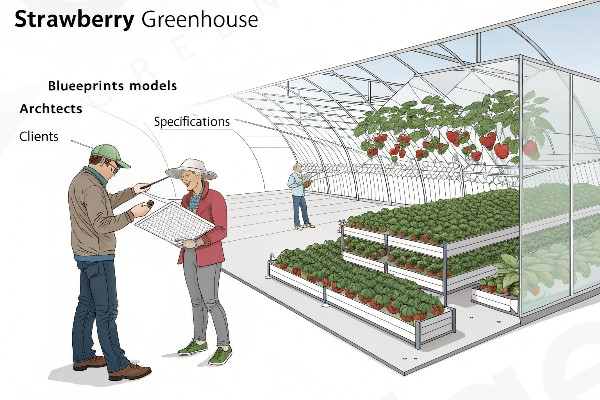
In my nearly three decades helping growers select greenhouse systems, I’ve found that asking the right questions before purchasing is the most reliable predictor of long-term satisfaction. Last year, I met with a grower who had previously invested in a greenhouse without proper vetting. He discovered after construction that the manufacturer had never built a strawberry-specific structure before, resulting in numerous expensive modifications.
Essential Questions for Evaluating Greenhouse Manufacturers
Based on hundreds of successful projects and some valuable lessons from less successful ones, I’ve developed this comprehensive list of questions every strawberry grower should ask potential greenhouse suppliers:
Experience and Expertise Assessment
Begin by understanding the manufacturer’s specific experience with strawberry production:
- "How many strawberry-specific greenhouses have you built in the last five years?"
- "Can you provide contact information for strawberry growers currently using your structures?"
- "What modifications do you make for strawberry production versus other crops?"
- "Do you have experience with my specific growing method (ground cultivation, raised troughs, or vertical systems)?"
- "What strawberry-specific challenges have you encountered in previous projects and how did you solve them?"
I recall visiting a greenhouse manufacturer who claimed expertise in strawberry structures but couldn’t name a single berry-specific feature when pressed. Their "experience" consisted of standard vegetable houses that happened to contain strawberries. This is dramatically different from purpose-built strawberry facilities.
Technical Specifications and Engineering
Next, dive into the technical details that will determine your greenhouse’s performance:
- "Have your greenhouse designs been engineered for my region’s specific wind, snow, and seismic conditions?"
- "What is the expected lifespan of the structure? Of the covering material?"
- "How are your structures designed to handle condensation management for strawberry production?"
- "What load capacity can the structure support for trough systems, irrigation equipment, and potential hanging systems?"
- "What ventilation capacity does the greenhouse provide as a percentage of floor area?"
During a consultation in Southeast Asia, I identified that the proposed greenhouse had only 15% ventilation capacity – far below the 25-30% we recommend for strawberry production in humid climates. This single oversight would have created disastrous disease pressure had it not been corrected before construction.
Climate Control Systems
Since strawberries have specific climate requirements, these questions are critical:
- "How does your climate control system manage the lower temperature requirements of strawberries?"
- "What systems are included for humidity management to prevent botrytis while maintaining proper growing conditions?"
- "How is air circulation handled throughout the growing area to ensure uniform conditions?"
- "What energy efficiency features are incorporated to reduce operating costs?"
- "How does the system prevent temperature extremes that can impact strawberry flowering and fruit development?"
I worked with a grower in Europe who was comparing two seemingly similar quotes until we discovered one manufacturer included a strawberry-specific climate control algorithm that maintained precisely the right balance of temperature and humidity throughout the fruiting cycle. This single feature improved their marketable yield by nearly 15% compared to standard greenhouse controls.
Construction and Support
Finally, understand what happens during and after construction:
- "Who handles the installation, and what is their experience level?"
- "What training is provided to my team on system operation and maintenance?"
- "What warranty terms are offered on structure, covering, and systems?"
- "What is the typical response time for technical support if problems arise?"
- "Do you provide spare parts locally, and for how long will they be available?"
A client in Central Asia once told me about their previous greenhouse purchase where the manufacturer disappeared after installation, leaving them with no support when a control system failed mid-winter. The resulting crop loss exceeded the "savings" from choosing that supplier by more than ten times.
At CFGET, we’ve built our reputation on answering these questions thoroughly and honestly. We believe that well-informed clients make our best long-term partners, and we encourage prospective customers to ask these tough questions – not just of us, but of any greenhouse supplier they’re considering.
Comparing Polycarbonate, Glass, and Poly Film Greenhouses for Strawberries?
Selecting the wrong covering material wastes thousands of dollars either through excessive initial costs or poor performance. Many growers I’ve consulted have struggled with unsuitable coverings that created less-than-ideal growing environments for strawberries.
For strawberry cultivation, poly film greenhouses dominate (80% of commercial operations) due to their cost-effectiveness ($10-15/m²), appropriate light diffusion, and easy replacement every 3-5 years. Glass offers superior longevity and light transmission but costs 3-4 times more ($35-60/m²). Polycarbonate provides better insulation but risks excessive heat retention and costs $25-35/m². Most commercial strawberry operations achieve the best ROI with high-quality poly films with specific light-diffusing and heat-management properties.
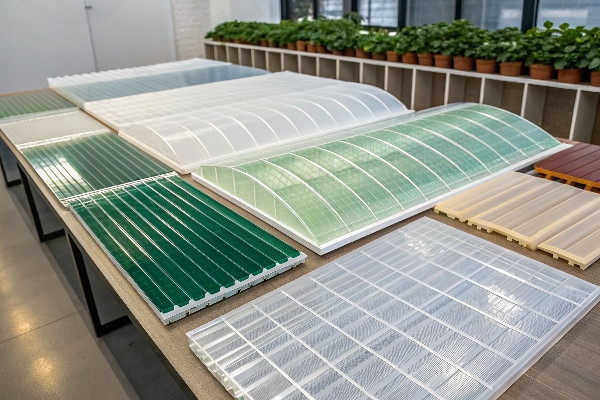
I remember visiting a new strawberry operation in Southeast Asia where the owner had invested in expensive twin-wall polycarbonate, assuming the premium material would yield premium results. Unfortunately, the material retained too much heat for optimal strawberry production in that climate, creating constant temperature management challenges. Meanwhile, a neighboring farm using specialized poly film with IR blocking properties maintained ideal temperatures at a fraction of the cost.
Detailed Analysis of Covering Options for Strawberry Production
After decades of observing various covering materials across different climates, I’ve compiled this comprehensive comparison specifically for strawberry cultivation:
Polyethylene Film Coverings
Poly film dominates commercial strawberry production for good reasons:
| Advantage | Details |
|---|---|
| Cost-Effective | $10-15/m² installed, making initial investment much lower |
| Replaceable | 3-5 year lifespan allows updating to newer technologies |
| Customizable | Available with specific light diffusion, IR reflection, and anti-drip properties |
| Appropriate Light Levels | Provides 85-90% light transmission with options for diffusion |
| Easy Repair | Simple patching for minor damage |
| Quick Installation | Faster to install than rigid coverings |
The main disadvantages include shorter lifespan and potential for damage from extreme weather. However, for most commercial operations, the economic advantages outweigh these concerns, particularly since modern films have improved dramatically in durability and performance.
A large-scale producer in Spain shared with me that their strategy of replacing films every 4 years actually provides an advantage – each replacement incorporates the latest advancements in film technology, allowing continual improvement without major structural changes.
Glass Greenhouse Systems
Glass offers distinct benefits for certain situations:
| Advantage | Details |
|---|---|
| Exceptional Longevity | 25+ years with proper maintenance |
| Superior Light Transmission | 90-95% light transmission |
| Premium Appearance | Aesthetic appeal for retail operations or agritourism |
| Snow Shedding | Excellent performance in heavy snow regions |
| Zero Permeability | Complete control over internal environment |
| Long-term Value | Despite higher initial cost, may offer better lifetime value |
The primary disadvantages are significantly higher initial cost ($35-60/m²) and potential for heat build-up without proper ventilation and screening. Glass also requires more substantial structural support, further increasing costs.
I worked with a premium strawberry producer in a cold European climate who justified the additional investment in glass based on energy savings during winter production and premium market positioning. Their calculations showed the glass system would break even compared to film replacement after approximately 12 years, with advantages thereafter.
Polycarbonate Panel Systems
Polycarbonate offers a middle ground between film and glass:
| Advantage | Details |
|---|---|
| Good Insulation | Twin or triple-wall options provide better heat retention |
| Moderate Lifespan | 10-15 years before significant degradation |
| Impact Resistance | High resistance to hail and other impacts |
| Moderate Cost | $25-35/m², between film and glass |
| Light Diffusion | Natural diffusion properties reduce "hot spots" |
| UV Protection | Most panels include UV protection to extend life |
The disadvantages include potential yellowing over time, reduced light transmission compared to glass, and the risk of overheating in warmer regions. This can be particularly problematic for strawberries, which prefer moderate temperatures.
A client in a mountainous region with extreme hail risk opted for polycarbonate specifically for its impact resistance after losing an entire poly film structure to a severe storm. However, they needed to incorporate additional ventilation to manage the increased heat retention.
Material Selection Based on Climate and Production Goals
The right covering choice depends heavily on your specific circumstances:
- In hot climates: Specialized heat-reducing films usually provide the best combination of performance and value
- In cold climates with winter production: Twin-wall polycarbonate or glass may justify higher costs through energy savings
- In moderate climates: Standard horticultural films with 3-4 year lifespans typically offer the best ROI
- For premium market positioning: Glass may provide marketing advantages for direct-to-consumer operations
At CFGET, we analyze your specific climate data, production seasons, energy costs, and marketing approach before recommending covering materials. Often, we suggest hybrid approaches such as using polycarbonate on northern exposures for insulation while using film on southern exposures for optimal light and heat management.
Understanding Turnkey Strawberry Greenhouse Solutions: What’s Included?
The term "turnkey" means vastly different things to different suppliers, leading to shocking cost overruns and missing components. I’ve helped numerous growers who discovered too late that critical systems weren’t included in their supposedly complete greenhouse package.
A comprehensive turnkey strawberry greenhouse solution should include structural components, appropriate covering materials (typically poly film), strawberry-specific climate control systems, irrigation and fertigation equipment, growing system infrastructure (troughs or bed preparation), environmental monitoring, and post-installation training. Verify that manufacturers specify all components in writing, as many "turnkey" solutions omit critical elements like water treatment, automation systems, or appropriate controls.
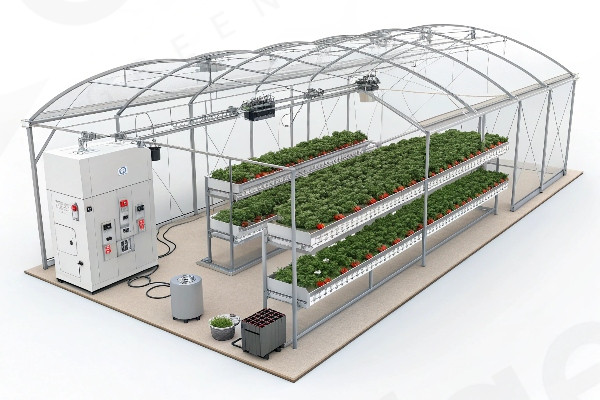
One of the most difficult conversations I’ve had in my career was with a new strawberry grower who had purchased what was marketed as a "complete turnkey greenhouse." When I visited to help troubleshoot production issues, I discovered the "turnkey" solution lacked proper climate controls, had no automation for ventilation, and came with a basic irrigation system unsuitable for strawberry production. The grower had to invest nearly 40% beyond the original budget to make the greenhouse functional for strawberries.
What Should Be Included in a True Turnkey Strawberry Greenhouse
Based on my experience implementing successful strawberry projects worldwide, here’s a comprehensive breakdown of what a genuine turnkey solution should include:
Structural Components and Covering
The basic greenhouse structure should be specifically designed for strawberry production:
- Complete frame system engineered for local conditions and strawberry-specific requirements
- Appropriate covering material (typically high-quality poly film for most commercial operations)
- All necessary fasteners, sealing systems, and structural components
- Foundation system appropriate for your soil conditions
- Proper entryways including air locks where appropriate
- Installation labor and equipment
I worked with a Central Asian client who discovered their "turnkey" quote did not include foundation work or even the concrete for post footings. This oversight delayed their project by weeks and added significant unexpected costs.
Climate Control Systems
For strawberries, specific climate control components1 are essential:
- Ventilation systems sized for strawberry’s cooling requirements (typically 25-30% roof vent area)
- Heating system appropriately sized for your climate and production schedule
- Horizontal airflow fans for proper circulation
- Climate control computers with strawberry-specific programming
- Cooling systems if required by local climate (pad and fan, fog, or misting)
- Thermal screens for energy conservation in colder climates
- Sensors and monitoring equipment
A common oversight I see is inadequate sensor placement. A European client’s "turnkey2" system included only a single temperature/humidity sensor for a 5,000 m² greenhouse, creating problematic climate zones throughout the structure. Proper systems typically require multiple sensor points for accurate monitoring and control.
Irrigation and Fertigation Equipment
Water management is critical for strawberry quality and yield:
- Water source development if needed (well, storage tanks, etc.)
- Water treatment systems (filtration, pH adjustment, etc.)
- Main irrigation pumps and distribution
- Drip irrigation components specific to your growing system
- Fertigation units with appropriate capacity and precision for strawberries
- Water recycling systems if utilizing closed-loop irrigation
- Monitoring and control systems for irrigation management3
During a project in Southeast Asia, the greenhouse supplier had included basic drip irrigation but not the specialized emitters needed for strawberry production. This seemingly small oversight led to significant uniformity problems and crop stress until corrected.
Growing System Infrastructure
The physical growing environment should be fully prepared:
- Growing troughs or raised bed systems if not using ground cultivation
- Supporting structures for troughs with proper load capacity
- Growing media or substrate appropriate for strawberries
- Ground covering materials for weed suppression
- Pathways and access systems
- Support systems for runners and plant training if needed
I advised a large operation that discovered their "turnkey2" quote didn’t include the actual growing troughs – only the supports for them. This added an unexpected $75,000 to their project cost at the last minute.
Additional Critical Components
A truly complete system also includes:
- Electrical infrastructure including distribution panels and wiring
- Backup power systems if appropriate for your region
- Lighting systems if supplemental light is needed
- CO₂ enrichment if used in your production model
- Pest exclusion systems (screens, entryways)
- Automation systems for repetitive processes
- Comprehensive monitoring and alarm systems
- Communications infrastructure for remote monitoring
Post-Installation Support
Perhaps most importantly, true turnkey solutions include:
- Thorough staff training on all systems
- Complete documentation and operating manuals
- Initial growing support and consultation
- Clear warranty terms and service schedules
- Spare parts package for critical components
- Technical support protocols and contact information
At CFGET, our definition of "turnkey" means you can literally turn the key and begin growing. We’ve developed detailed checklists for strawberry-specific greenhouse projects that ensure nothing is overlooked, from major systems down to the smallest components that can impact your success. When comparing quotes, we encourage clients to request itemized lists of all included components to ensure true "apples to apples" comparison.
Conclusion
Selecting the right strawberry greenhouse manufacturer requires careful evaluation of experience, technical specifications, materials, and comprehensive solutions. At CFGET, our 28 years of specialized experience ensures your greenhouse will be optimized for strawberry production, balancing cost-effectiveness with performance. Contact us to discuss your specific needs and climate conditions for a customized solution.
Explore the critical climate control components to ensure optimal strawberry growth and avoid common pitfalls in greenhouse management. ↩
Understanding the full scope of a turnkey solution can help you avoid costly oversights in your greenhouse project. ↩ ↩
Learn about advanced irrigation management techniques that can significantly enhance strawberry quality and yield in your greenhouse. ↩
